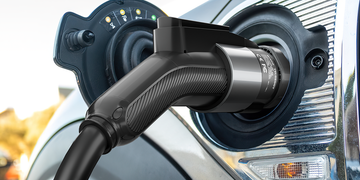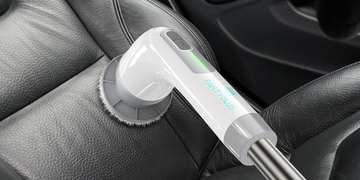What are the differences between level 1, 2, and 3 electric vehicle chargers? Unlike Level 1 and Level 2 charging that uses alternating current (AC), Level 3 charging uses direct current (DC). The voltage is also much higher than Level 1 & 2 charging, which is why you don't see level 3 chargers installed at home.
As electric vehicles (EVs) become increasingly popular, the need for efficient and diverse charging infrastructure has grown. Electric vehicle chargers are categorized into different levels, each offering distinct charging speeds and capabilities. In this article, we will explore the differences between Level 1, Level 2, and Level 3 electric vehicle chargers.
Three Levels of EV Charging
There are three levels of EV charging; Level 1, Level 2, and Level 3. Level 3 is broken into DC Fast Charging and (Tesla) Supercharging. The higher the level of charging, the faster the charging process, as more power is delivered to the vehicle. It’s important to note that different EVs charge at different speeds on each level, because each EV can accept different levels of power from the EVSE, industry-speak for electric vehicle supply equipment, the charger.
When an electric vehicle is plugged in, there’s a communication process before the charger is energized. Basically, the car asks the charger how much power it can deliver, and then the car calls for the maximum amount of power that the station can deliver and the vehicle can accept.
The car always determines how much power it accepts, so there’s no need to worry about plugging into a charging station that can deliver more power than your EV can handle. The car will not allow the charger to deliver too much power.
Level 1 Electric Vehicle Chargers:
Connectors Used: J1772, Tesla
Charging Speed: 2 to 5 Miles Per Hour
Locations: Home, Workplace & Public
Level 1 chargers are the most basic and widely accessible chargers for electric vehicles. These chargers use a standard household outlet (120 volts) and are often included with the purchase of an electric vehicle. While Level 1 chargers are convenient for residential use, they have a lower charging power, typically delivering around 2 to 5 miles of range per hour. This makes them suitable for overnight charging but less practical for quick top-ups during the day.
Level 2 Electric Vehicle Chargers:
Connectors Used: J1772, Tesla
Charging Speed: 12 to 80 Miles Per Hour
Locations: Home, Workplace & Public
Level 2 chargers offer a faster charging solution compared to Level 1. These chargers require a 240-volt power source, similar to what is used for larger home appliances like electric dryers or stoves. Level 2 chargers are commonly found in public charging stations, workplaces, and some residential settings. The charging power of Level 2 chargers can range from 3.3 kW to 19.2 kW, providing a charging speed of approximately 10 to 60 miles of range per hour. This makes Level 2 chargers suitable for a variety of situations, from daily commuting to longer journeys.
Level 3 Electric Vehicle Chargers (DC Fast Chargers):
Connectors Used: Combined Charging System (Combo), CHAdeMO & Tesla
Charging Speed: 3 to 20 Miles Per Minute
Locations: Public
Level 3, also known as DC fast chargers, represent the highest charging level currently available for electric vehicles. Unlike Level 1 and Level 2 chargers, Level 3 chargers use direct current (DC) power and provide significantly faster charging speeds. DC fast chargers are commonly found along highways, in urban areas, and at rest stops. These chargers can deliver charging power ranging from 20 kW to 350 kW or more, offering rapid charging rates of up to 250 miles of range in 30 minutes. Level 3 chargers are ideal for long-distance travel, enabling EV drivers to quickly recharge and continue their journey.

EV Charging Levels FAQs (Frequently Asked Questions)
Can I charge my EV on a Tesla Supercharger?
No. Tesla Superchargers can only be used to charge Tesla vehicles. The Tesla Supercharger network is a proprietary network installed by Tesla for Tesla customers only.
Can I charge my Tesla on a non-Tesla DC Fast Charger in places where I wouldn’t find a Supercharger?
Yes. Tesla sells a $400 adapter that allows Tesla owners to plug into CHAdeMO DC fast chargers. Tesla also plans to sell a Combo adapter so Tesla owners can also access DC Fast chargers with the Combo standard. Tesla to Combo adapters are already available in Europe, but the North American Combo plug is slightly different, so a different adapter needed to be developed.
How much does it cost to charge on a Level 3 charger?
Level 3 chargers are operated by private charging networks, and the pricing varies greatly from network to network. Some bill the customer by how long the vehicle is connected to the charger, while others bill by how much energy was dispensed. Charging your EV on a level 3 charger will almost always cost much more than charging at home and can cost 2 to 3 times as much at some locations. At that point, the cost to drive on electricity is nearly the same as the cost to drive using gasoline although with lower total emissions.
Are there ways to get cheaper prices on L3 chargers? Can I join a club? Get volume discounts?
Most EV charging networks offer discounted charging if you join a monthly or yearly service plan that requires you to pay a fee. However, if you use the network more than once a month the savings usually more than cover the cost of the monthly membership.
What are the differences between level 1, 2, and 3 electric vehicle chargers? Understanding the differences between Level 1, Level 2, and Level 3 electric vehicle chargers is essential for EV owners and those considering making the switch to electric transportation. While Level 1 chargers are suitable for overnight charging at home, Level 2 chargers offer a faster and more versatile option for various locations. Level 3 chargers, with their rapid charging capabilities, are crucial for facilitating long-distance travel. As the electric vehicle charging infrastructure continues to evolve, a mix of these charger types will contribute to a more accessible and convenient charging network for the growing number of electric vehicle users.





